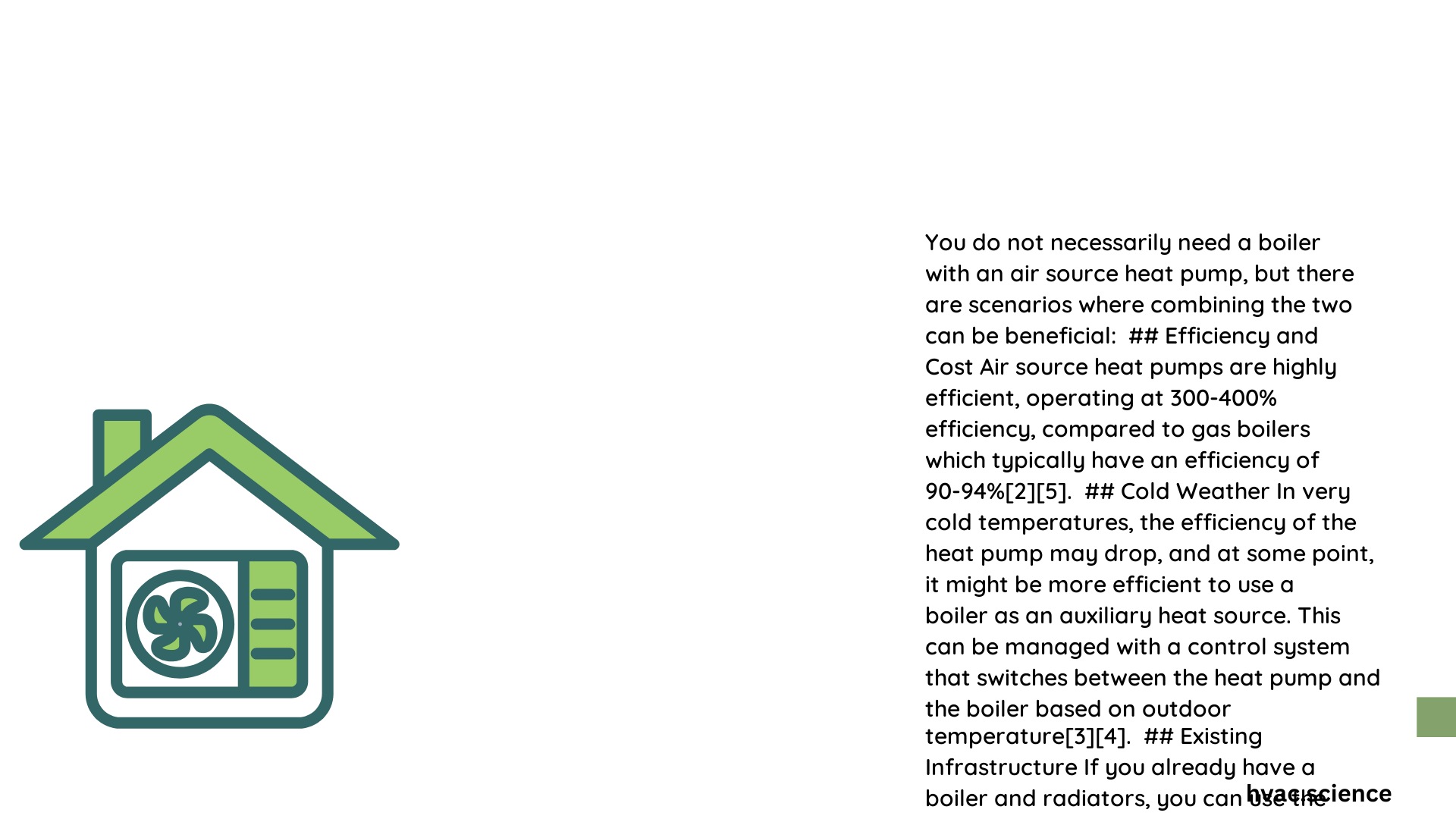Air source heat pumps (ASHPs) are innovative heating solutions that can dramatically transform home energy efficiency. However, the question of whether you need a boiler alongside an ASHP depends on multiple complex factors including climate, building design, heating demands, and existing infrastructure. While ASHPs can provide substantial heating capabilities, they may not completely replace traditional boilers in all scenarios, especially in regions with extreme temperature variations or homes with high heating requirements.
What Determines the Need for a Boiler with an Air Source Heat Pump?
Can Air Source Heat Pumps Operate Without a Boiler?
Air source heat pumps can function independently in certain conditions, but their effectiveness varies based on several critical factors:
Temperature Performance Thresholds
- Cold Climate Limitations: ASHPs experience significant performance reduction below -13°C (9°F)
- Efficiency Drops: Coefficient of Performance (COP) decreases dramatically in extreme temperatures
- Backup Heating Requirements: Supplemental heating becomes crucial in low-temperature environments
Heating Demand Considerations
| Heating Scenario | ASHP Performance | Boiler Necessity |
|---|---|---|
| Mild Climate | High Efficiency | Low/No Boiler Needed |
| Moderate Climate | Moderate Efficiency | Occasional Boiler Support |
| Extreme Climate | Limited Efficiency | Consistent Boiler Required |
What Are the Key Factors Influencing Boiler Integration?
Several critical elements determine whether you’ll need a boiler alongside your air source heat pump:
- Geographic Location
- Regions with prolonged cold winters
- Areas experiencing temperature extremes
-
High-latitude locations
-
Building Characteristics
- Insulation quality
- Square footage
- Existing heating distribution system
-
Age of the property
-
Heating Load Requirements
- Total British Thermal Unit (BTU) needs
- Peak heating demands
- Consistent temperature maintenance
How Do Air Source Heat Pumps and Boilers Work Together?
Complementary Heating Strategies
- Hybrid Systems: ASHPs provide primary heating
- Boiler as Backup: Supplements during extreme conditions
- Temperature Optimization: Intelligent switching between systems
Energy Efficiency Metrics
- Average ASHP Seasonal COP: 2.5-3.5
- Potential Energy Savings: 30-50% compared to traditional systems
- Carbon Emission Reduction: Significant environmental benefits
What Installation Considerations Exist?
- System Compatibility Assessment
- Evaluate existing infrastructure
- Determine required modifications
-
Consult professional HVAC technicians
-
Control System Integration
- Smart thermostats
- Outdoor reset controls
- Automated switchover mechanisms
Cost and Investment Perspectives
Financial Considerations
- Initial Investment: Higher upfront costs
- Long-Term Savings: Reduced energy expenditure
- Potential Incentives: Government rebates and tax credits
Return on Investment Calculation
- Average payback period: 5-10 years
- Annual energy cost reduction: 20-40%
- Increased property value
Conclusion

Determining whether you need a boiler with an air source heat pump requires comprehensive evaluation of your specific circumstances. While ASHPs offer remarkable efficiency, they may not completely replace traditional boilers in all scenarios.
Recommended Next Steps
- Professional energy audit
- Detailed home heating assessment
- Consultation with HVAC specialists
Expert Recommendation
Invest in a hybrid system that leverages the strengths of both air source heat pumps and boilers for optimal performance and efficiency.
